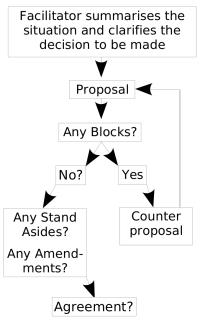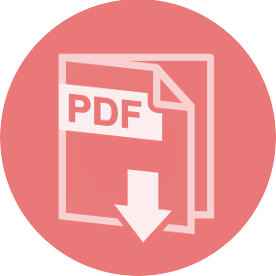So what do we do when we need to make a decision – fast? In dynamic situations such as actions and protests people may only have (at most) a few minutes to decide what to do. There are shortcuts to reaching consensus quickly in such situations, but it takes preparation and practice to do it well. Nevertheless quick consensus is worth trying out because it’s a way of making the best decision you can in the short time you have. If done well, it ensures that everyone actively agrees to the decisions taken and bears equal responsibility for the consequences.
Quick consensus works best in groups that know each other well, are used to working together and are committed to using consensus.
The key to quick consensus is to skip the discussion stage of your decision making process, moving straight from introducing the issue to checking agreement on a proposal. But since the discussion stage is the most important part of the decision making process it can only work if your group takes the time in advance to explore each others’ needs and likely reactions in the situations you might meet. In effect, this is like having the discussion stage of the usual consensus process in advance. The better people in your group know each other, the more likely it is that you’ll be able to anticipate what is likely to work for everyone in a given situation.
You can start by thinking up the likely scenarios e.g. you might find yourselves needing to decide quickly whether to stay in a demo that is turning violent. Discuss these scenarios in depth with your group, then have a few practice quick consensus decisions. Give yourselves a time limit to come to a decision on relevant scenarios e.g. ”You’re taking part in a march. The police have given you 2 minutes to get out of the road, or they’ll arrest you all. What do you do?”
If the group is newly formed, or there’s not much time before the situation in which you might need to use quick consensus then it’s definitely worth prioritising getting to know each other and sharing information and feelings.
It is pretty much essential for everyone in your group to share in advance how they feel about the different situations that may happen. Think about how accurately you can you guess likely behaviour in various situations:
Since efficiency is one of the keys to quick consensus, it’s sensible to agree on a facilitator prior to going into any situation. There are lots of ways to choose your facilitator: they may be the person with the most relevant experience in that situation, or perhaps the person who is most alert on the day.
If you think you may be in a situation where quick consensus may not work, for example you won’t have any time at all to make a decision, or you haven’t been able to do the right preparation then your group should think (in advance!) about other ways of making decisions, whether that’s following a particular person’s lead or a pre-arranged general plan.
 The following approach assumes you have only a minimal amount of time to make a decision. If you have a bit more time then you may wish to include some discussion, but the facilitator will have to decide at the time.
The following approach assumes you have only a minimal amount of time to make a decision. If you have a bit more time then you may wish to include some discussion, but the facilitator will have to decide at the time.
When you need to make a decision quickly, it is the role of the facilitator to summarise all that has happened and clarify the decision that needs to be made.
After the summary, move straight onto making just one proposal. If the group is considering more than one proposal then it’ll take time to discuss which to use, or how to synthesise the various elements. By having just one proposal at a time you can keep the process simple and quick.
Once everyone has understood the current proposal, check first whether anyone is blocking it. If it is blocked, then move onto another proposal immediately, rather than spending time on discussing the block. On the other hand, if you hit upon a proposal that will work, then simply go with that.
If there is time, check for standasides. If standasides happen then you can ask for amendments to improve the proposal which might help everyone to feel comfortable with the proposal in its entirety.
The facilitator’s role is then to move the discussion on to implementing the decision.
As with the usual consensus processes, there is a difference between blocks and standasides.
A standaside means “I won’t do this but I’m OK if the rest of the group does it”. This allows the proposal to go ahead in the group’s name, but those that choose to stand aside take no part in that action.
A block kills a proposal – it’s a total veto. Blocks are more likely to happen in quick consensus because the group hasn’t had time to explore where people are on the decision. Everyone has the right to block. It means: “ I don’t want the group to do this”. In quick consensus people normally block for 2 reasons:
Some groups insist that in quick consensus you must have a counter proposal before you can block.
Some tips to help make quick consensus work:
